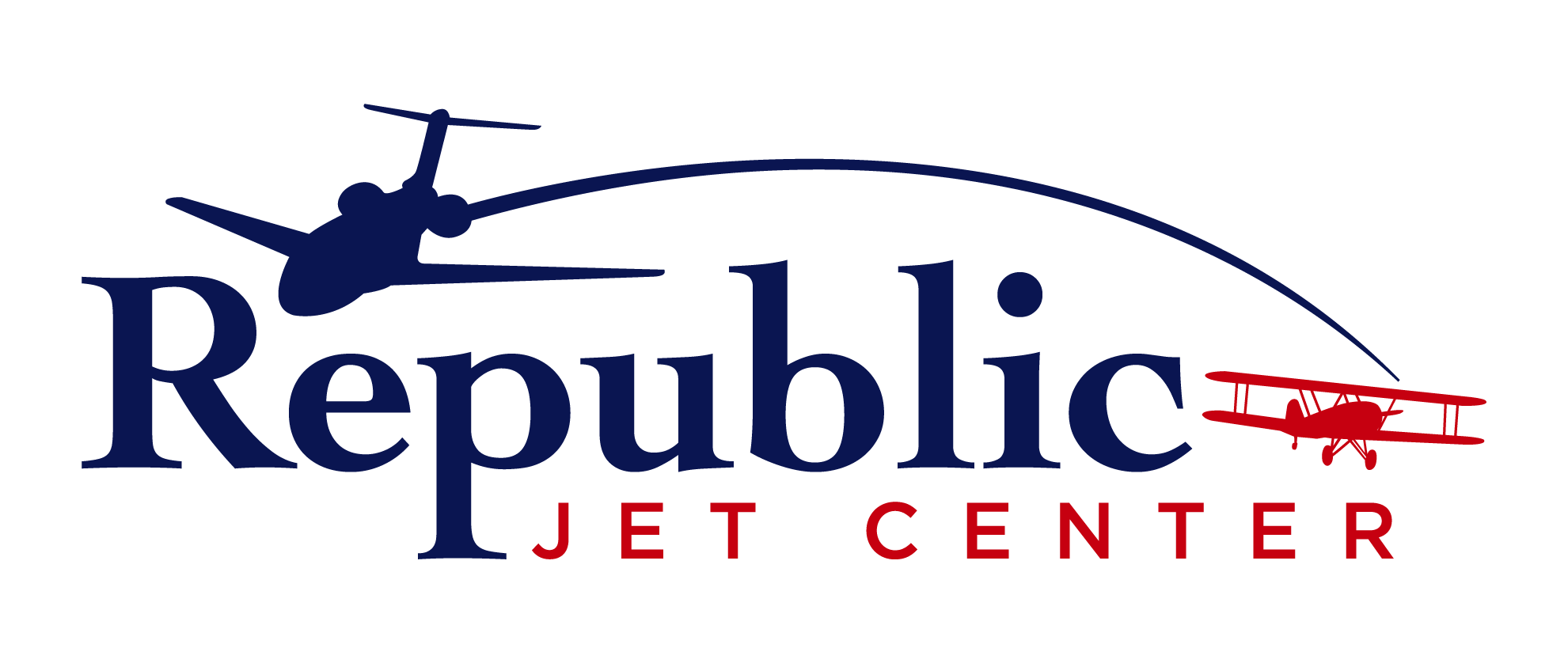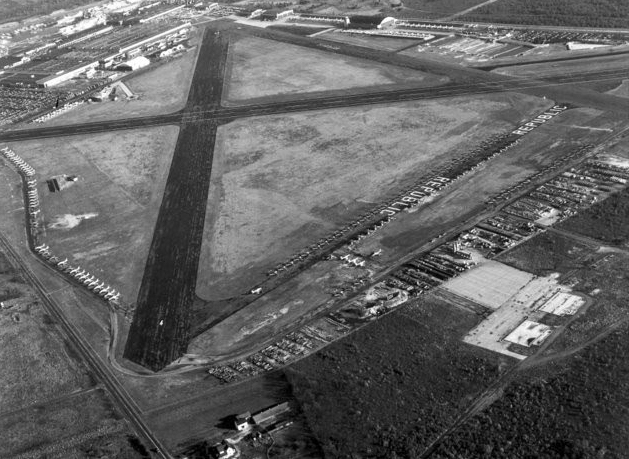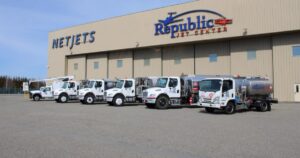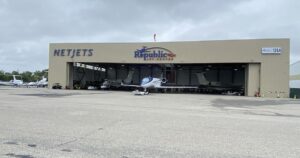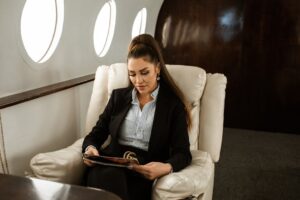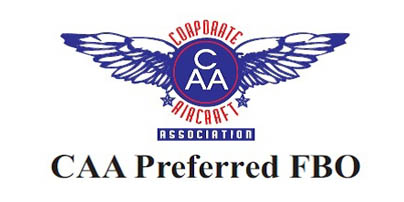Republic Airport is something of a landmark in New York. Here’s a quick history of this unique and interesting Long Island airport.
The history of Republic Airport dates back to 1927, a full fifteen years before the nearby Long Island Islip Airport opened.
Today, Republic Airports’s known as New York’s premier executive airport. Yet, it’s even more famous for its pivotal role during World War II.
At this time, the onsite factory produced over 9,000 P-47 Thunderbolt Aircraft. This fighter plane was instrumental in ending the Luftwaffe’s reign over the skies.
Nowadays, you can find out more about this as well as the airport’s role in aviation history at the American Air Power Museum located on-site.
If you’re interested in some other aspects of the history of this prestigious Long Island airport, keep reading.
1917 – Aviation Comes to Farmingdale
Farmingdale’s long association with aviation started with the Lawrence Sperry Airplane Company.
From its location on Rose and Richard Streets, LSAC focussed on producing planes for ‘aerial motorcycle’ missions. This involved delivering messages in the field.
Sperry only ever produced 50 of these Messengers as well as a few civilian versions of this airplane.
Breese Aircraft Company joined the fray in 1918, designing and manufacturing the Breese Penguin. Only five of these airplanes ever served their purpose as an airforce preflight trainer. The other 294 remained in storage.
During the 1920s, Fairchild Aviation opened up in town. Their factory produced aerial photography equipment.
Unable to find aircraft that could support his camera platforms, Fairfield started designing and building his own planes. He eventually set up a shop in the Sperry Factory in 1923 after the owner’s death.
The original version, the FC-1 proved wholly inadequate for the task. He then replaced it with the FC-2, which proved exceptionally popular.
Before long, Fairfield couldn’t keep up with demand from these small premises. So, he moved his operation to a vacant lot in East Farmingdale with easy access via rail and road.
In 1928, he developed the 77,967-acre Fairchild Flying Field to fly his planes out after production. He went on to build a huge variety of aircraft from his Fairchild Engine and Airplane Manufacturing Company located at this prime spot.
In 1931, Fairfield moved to Maryland. The American Corporation, AVCO, quickly took up residence, but couldn’t survive the Depression.
Grumman Aircraft Engineering Corporation took over the property in 1932. From here, they manufactured the SJF-1, known as the Duck. They produced 632 of these amphibious fighter planes before moving to Bethpage.
1937 Turning Point
Seversky Aircraft Corporation eventually took over where Grumman had left off. Yet, internal conflict and financial troubles caused its demise by 1939.
Under new ownership and rebranded as Republic Aviation, the factory occupied Hangar 2. This is now the home of the American Airpower Museum.
Thanks to its prowess at producing superb fighter planes, i.e. the Thunderbolt, Republic Aviation thrived for decades. During the height of its success, Republic Aviation employed over 24,000 Long Island locals manning a 24-hour production line.
By 1945, Republic Aviation was providing over 30 percent of the airplanes used to combat German forces in Europe. When the war ended, Thunderbolt production ceased and Republic diversified its operations.
Now, the factory started converting Douglas Skymasters into commercial airliners. It built amphibian aircraft and designed its own passenger planes.
They changed tack at the advent of the Korean War, once again providing over 2,000 F-84F Thunderstreak aircraft for the war effort.
In the meantime, Fairchild Aviation, now known as Ranger Aircraft and Engine Corporation, had returned to occupy its former engine factory.
It acquired Hiller Helicopters and changed its name to Fairchild Hiller. By 1965 Fairchild Hiller had acquired almost all Republic Aviation’s stock.
In 1966, Fairchild Hiller transferred ownership of Republic Airport to Farmingdale Corporation. They re-designated the airstrip as a general aviation facility.
By 1971, Fairchild Hiller had acquired Swearingen too and renamed itself Fairchild Republic in 1972. It produced the A-10 Thunderbolt for the Gulf War under this name.
Peace ensued and Fairchild Republic focussed on producing spoilers, edge slats, aileron, and trailing edge flaps for Boeing 747s. It also manufactured tail stabilizers for the space shuttles. These included Endeavor, Atlantis, Challenger, and Columbia.
Republic Aviation enjoyed mixed fortunes in the area of civil aviation. It eventually closed its doors in 1987, after nearly 7 decades.
A New Long Island Airport Takes Off
The Metropolitan Transportation Authority took over the airstrip in 1969 to transform it into a public space. They acquired 94 additional acres from the government as well as 115 acres from private individuals.
These are some of the improvements they undertook:
- Installing high-intensity lights on Runway 1-19 and Runway 14-32
- Setting up an instrument landing system on Runway 14-32
- Building a complex of hangars, fuel storage tanks, ad administration buildings
- Completion of a dual-level Administration, Terminal, and Maintenance building
- Building a 100-foot FAA control tower
In 1983, the New York State DOT (Department of Transportation) took over Republic Airport.
Now corporate hangars, education centers, flight schools, and offices were springing up everywhere. The DOT moved taxiway B to make way for modern business jets.
Since 2000, various entities have spent over $18 million refining the airport’s infrastructure.
The intention was never for Republic Airport to transform into a commercial airport. Yet, as the closest airport to Long Island, it soon became one of New York’s busiest destinations for private and charter planes.
Before long, a few companies started offering commercial flights from the airport and this spawned a few more changes. In 1983, updates included a 5,000 square foot terminal building and a daily shuttle service to New York.
However, proximity to La Guardia, and Long Island MacArthur Airport, meant that commercial operators could never quite make ends meet.
As a result, Republic Airport remains focussed on private flights, with a host of amenities and FBOs to suit its clientele.
Photo from Long Island Republic Airport Historical Society
Republic Airport Today
Today, this Long Island airport supports over 60 on-airport businesses. It employs over 1,370 people and boosts the economy by over $139 million every year.
As the leading FBO at Republic Airport, Republic Jet Center’s proud to be a part of this airport’s rich heritage.
Get in touch to find out more about New York’s premier fixed-base operator.
